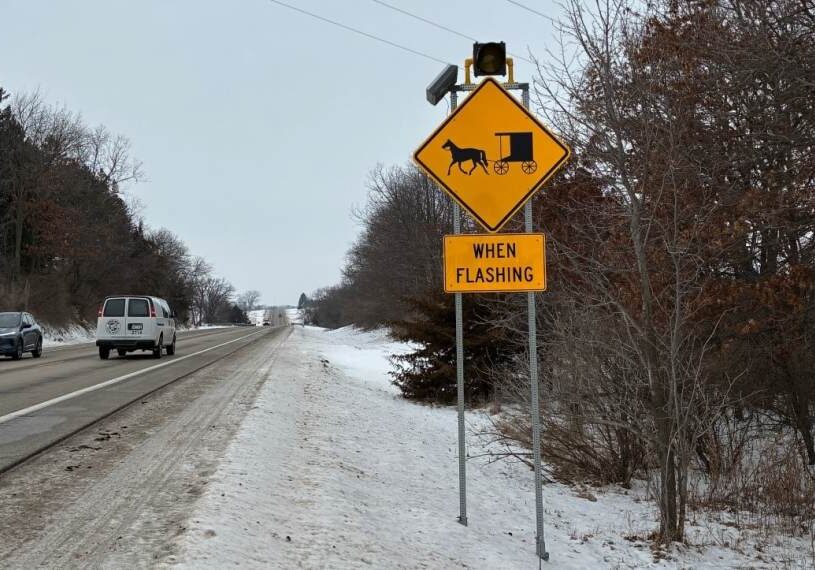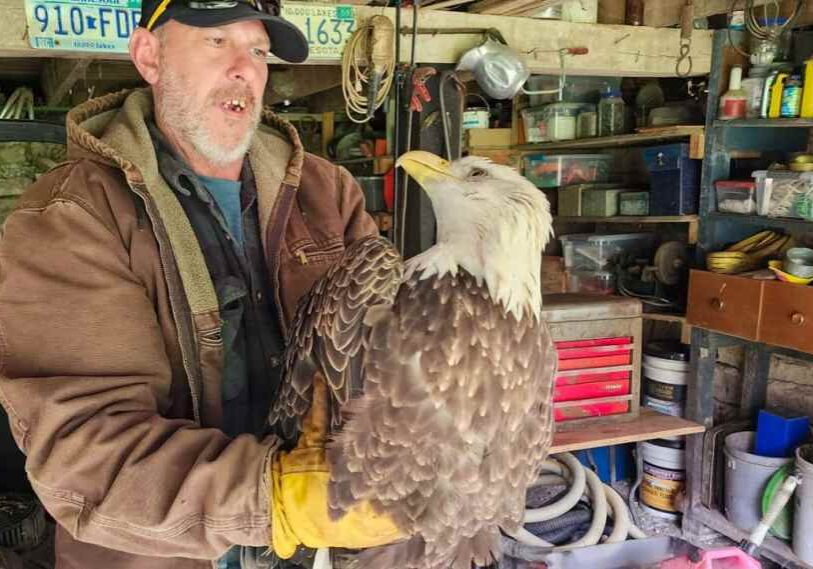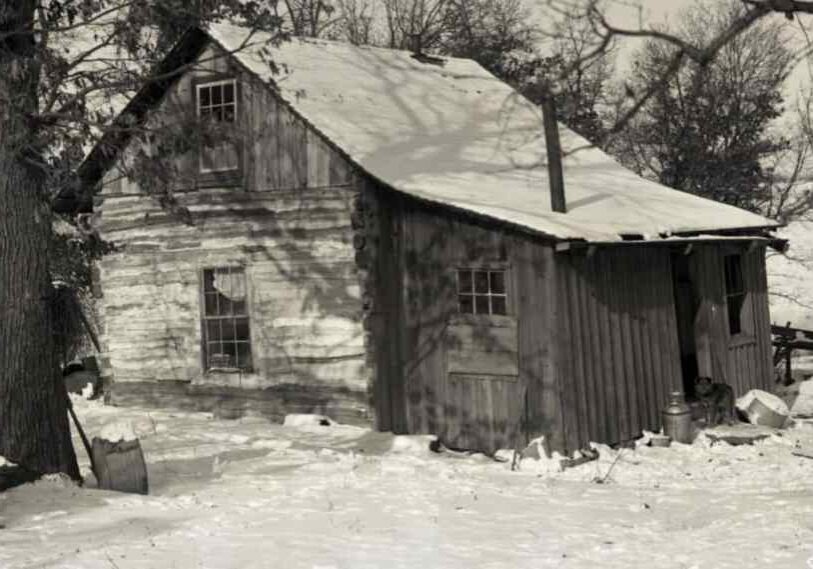Roger Steinberg Proves One Man Can Make a Difference

ROOT RIVER VALLEY – Roger Steinberg and I headed out on April 25, 2024, a pleasant, though windy, day for a road trip down U.S. Highway 52. This highway holds so many memories for Roger.
As we veered onto smaller county roads and gravel side roads, he shared recollections gathered over his career as a University of Minnesota (U of MN) Extension Agency educator. Roger traveled these roads helping small towns with development, planning and, on occasion, defusing a few personality differences.
A drive turns into a trip down memory lane
Retired in 2003 and now 80 years old, Roger lives in northeast Rochester but continues to be a lover of small towns.
Back when he visited these towns for work, he said he didn’t look at himself as a grand, all-knowing expert coming down to help. He wanted them to help themselves. He was more of a coordinator, someone who could see the possibilities local people might miss, a finder of resources and helping programs, a mediator.
He liked it all. “I just found the people to be good,” he said. Sure, at times there were some serious tiffs between two community leaders so he would be called in to help. It wasn’t conflict resolution because that hints at one person beating up on the other, but more conflict management, he said.
A lifetime of helping the helpers
But Steinberg also thought big. He helped start the Southern Minnesota Initiative Fund (SMIF). The SMIF website states its mission as: “…it invests for economic growth in the 20 counties of south central and southeastern Minnesota – this includes 175 communities and one Native nation. SMIF’s key interests include entrepreneurship, early childhood development and community vitality. SMIF has invested over $162 million in the region since 1986.”
And then there’s Eagle Bluff Environmental Learning Center near Lanesboro. Roger helped Joe Deden, the founder and, for many years its director, transform it from a classroom in Deden’s house overlooking the Root River to a major regional environmental learning center, still growing and hosting thousands of students and adults each year.

Roger Steinberg looks over the Root River from an overlook at Eagle Bluff Environmental Learning Center. (Photo by John Weiss)
There’s also the Experiment in Rural Cooperation that he helped initiate and coordinate, finding the right people to bring from the U of MN to help rural Minnesotans living in small towns. One of the first projects Roger started was in southeast Minnesota along these very roads but the program now has grown to five other areas of the state.
Oh yes, I also knew him when he was president of Friends of Whitewater State Park, a group he helped revive.
Yet Steinberg is rather low-key about all that. He’d say yes, he helped, but he was part of it, not its heart. “As I look back, working with all the people I did, I made a difference,” he said.
Rural Minnesota is forever changed for the better
Right now, he’s recovering from serious surgery, “I’m getting over the hump,” he said. He’s so tired from it all that he isn’t even trout fishing, one of his loves. When we talked as he drove, he said he isn’t sure how many streams he’s fished, but it’s a lot.
One of his fans is John Torgrimson of Lanesboro, Root River Current’s managing editor who suggested that we needed to do a story about Roger.
“Roger Steinberg’s fingerprints are on many initiatives that have changed the landscape of Southeast Minnesota, from Eagle Bluff to the Southern Minnesota Initiative Foundation to Regional Sustainable Development Partnerships,” Torgrimson said.
“I met Roger in the mid-1990s when I was a founding member of the Southeast Regional Sustainable Development Partnership, known then as the Experiment in Rural Cooperation,” Torgrimson said. “The partnerships were created to improve the linkage between the U of MN and Minnesota citizens, an effort to better fulfill the University’s obligations as a land grant institution. Roger worked with our citizen board to craft a foundation of service, offering small development grants to nonprofit organizations in a nine-county area of southeast Minnesota. That was 25 years ago and the organization is still a vital link in bringing the University’s research capabilities to its citizens.”
“Roger is South Dakota humble, seldom taking credit for the role he has played over the years in representing the U of MN to the people it was created to serve,” Torgrimson said.
Another admirer is Jeff Gorfine of Rochester who worked for the Olmsted County Community Action Program and served on some of the boards of groups Steinberg helped start. Steinberg “did an enormous amount of work, primarily with rural communities, by helping facilitate their efforts to get work done they believed and felt was vital to get done,” he said.
But he was never one to show off. “Roger is a more reserved and very ‘aw-shucks’ kind of a guy, very modest and understated,” he said.
From South Dakota to Minnesota
When on the highway, Steinberg filled me in on his circuitous path to Southeastern Minnesota. He was born in South Dakota and lived in Iowa for a while before attending South Dakota State University where he majored in biology. He moved to Washington state where he taught, including at a federal prison. “That was a unique, interesting experience too,” he said. “I met a lot of interesting people.”
After that, he moved back to South Dakota where he got a master’s degree in biological water testing and also worked for planning and zoning for a county. Things were informal there. He could call the governor and he’d take his call and the governor even had him address both houses of the legislature to talk about planning.
But his wife, Paulette, didn’t like it there, so in 1975 Steinberg pursued a job he learned about with the U of M Extension Agency, centered in Rochester. It was a great place because it was central to the many places he had to drive to, at times in ice and snowstorms.
“The first town we came to was Chatfield. We weren’t even in the downtown area before a memory popped up.” That trail near the high school? He helped get money for two high school students to plan the trail and the plants along it. You can still see it from the highway.
We crossed Mill Creek and I updated him on a habitat improvement project set to begin soon. We could see big piles of boulders ready to be placed along a reshaped shoreline on a stream that will soon be much narrower and much longer. And we had to check the Root River to see how it was doing. People like Steinberg naturally check moving water.

Roger Steinberg checks out the Root River at Chatfield. (Photo by John Weiss)
When we came to Fountain, his memories about his work were interrupted by a more important memory: pie. “Did you know that Fountain’s downtown restaurant has good pie?” he said. Knowing the best places for food is important when driving around small towns.
From Fountain, it was off to Eagle Bluff.
As we got closer, Roger shared a memory of how he’d drive to Lanesboro to pick up folding chairs, bring them to Deden for class, and then return them after the class. Working with Deden, Roger said they couldn’t get enough landowners interested in forestry, so they brainstormed about what to do. That is how Eagle Bluff was born.
Steinberg walked past the house, now housing its current Executive Director, Colleen Foehrenbacher. From there, he could see over the Root River winding well below him. Roger recalled many memories of canoeing the river and bow hunting with Deden on the land he could see.
Heading toward Preston, Steinberg talked about how he helped start SMIF. He knew the members of the McKnight family who had a major philanthropic organization. He found they wanted to expand from helping the metro area to also helping the rural area. “The rural economy was getting hit so badly,” he said. SMIF focuses on smaller towns across rural southern Minnesota.
He repeated he didn’t come in as an outside wizard. When working on planning, “I would always start out saying ‘how big do you want to be?’” Steinberg said. If the answer was “as big as Rochester”, then we’d talk about what needed to be done and what challenges would be faced in getting to that goal. He worked with quite a few towns in really tough situations such as losing a major industry or not having the people they needed.
One of the ways he helped was setting up community foundations that would get money locally as well as from outside sources. Also, “a foundation was the way for the community to talk through all of its issues,” he said. After a while, the local people would begin putting money into it. His first one was in Ellendale; there are now about 14 in Southeastern Minnesota.
In Preston, we stopped for sandwiches and a baked goodie at the Sweet Stop and Sandwich Shoppe, eating our lunch on a concrete picnic table at the trailhead to the Harmony-Preston Valley State Trail.
There he talked about the Experiment in Rural Cooperation. “I was very much involved with that,” he said. “Some Minnesota legislators wanted to help the small towns, not just farming. It wasn’t an easy program to sell but we made it happen.”
That experiment was a way for the U of M to bring some of its experts to small towns to help them, he said. Steinberg was the first to put together a board (Gorfine and Torgrimson were on it) and now there are similar programs across the state.
“Since then, a tremendous number of good things have happened down here and all over the state,” he said.
When he looked across the Root River to the Fillmore County Fairgrounds, another memory popped up. For eight or nine years, he was called on to be a 4-H fair judge. He judged youth projects such as model rocketry or rock collections. What he recalls most was how hot it was and how gratifying it was.

Roger Steinberg sits in front of the old entrance to the Fillmore County Fairgrounds where he spent many days during the fair judging 4-H projects. (Photo by John Weiss)
Oh yes, the county has an economic development program. “I spent a lot of evenings working with them,” he said. One night, driving back, Steinberg remembers hitting a raccoon, but he’s only hit two deer in the tens of thousands of miles he drove.
He said he helped get people from all 11 counties training on how to test for water quality; what to look for; and what to do with the information.
With that, Steinberg was tired and needed to head home, repeating the places we had seen, the places one man with determination and a love of small towns could help.






